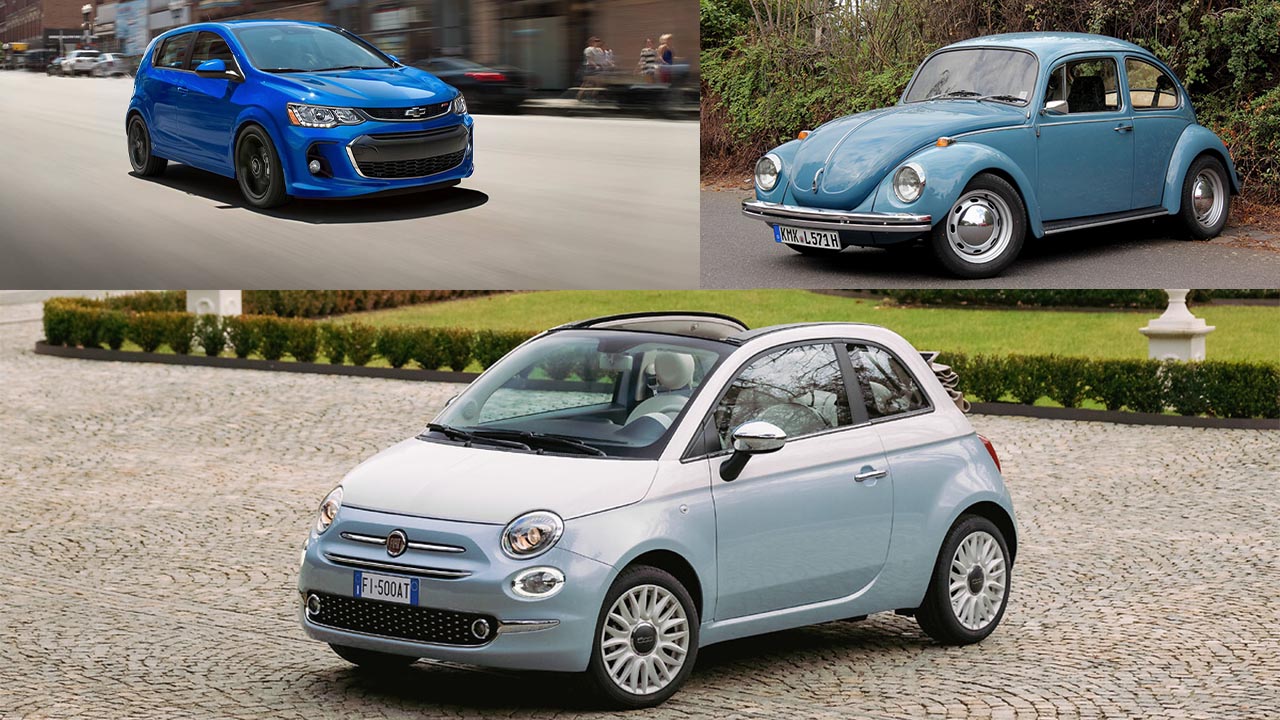While automotive trends may shift over time, some cars manage to transcend these changes, retaining their allure, sophistication, and appeal for many years.
Whether it’s due to their graceful design, distinct presence, or the flawless combination of engineering and artistry, these cars continue to capture attention, making it seem as though they’ve just been revealed straight from the showroom floor.
1. Lancia Stratos (1973-1978)
Designed for rally supremacy, the wedge-shaped Lancia Stratos boasts a futuristic appearance that still catches eyes today.
Weighing just around 980 kg, the Stratos was incredibly light and powered by an engine producing between 190 and 320 hp, allowing it to tear through both dirt and asphalt with ease.
As for visibility? It wasn’t a priority when the car exuded such raw aggression. To meet homologation requirements, Lancia had to produce 492 road versions, which retained the car’s thrilling character, though they were a bit more refined.
Unfortunately, Fiat, Lancia’s parent company, discontinued the Stratos in favor of the Fiat 131 a decision that remains heartbreaking for enthusiasts. Today, the Stratos is considered a coveted prize for collectors, with prices reaching astronomical heights.
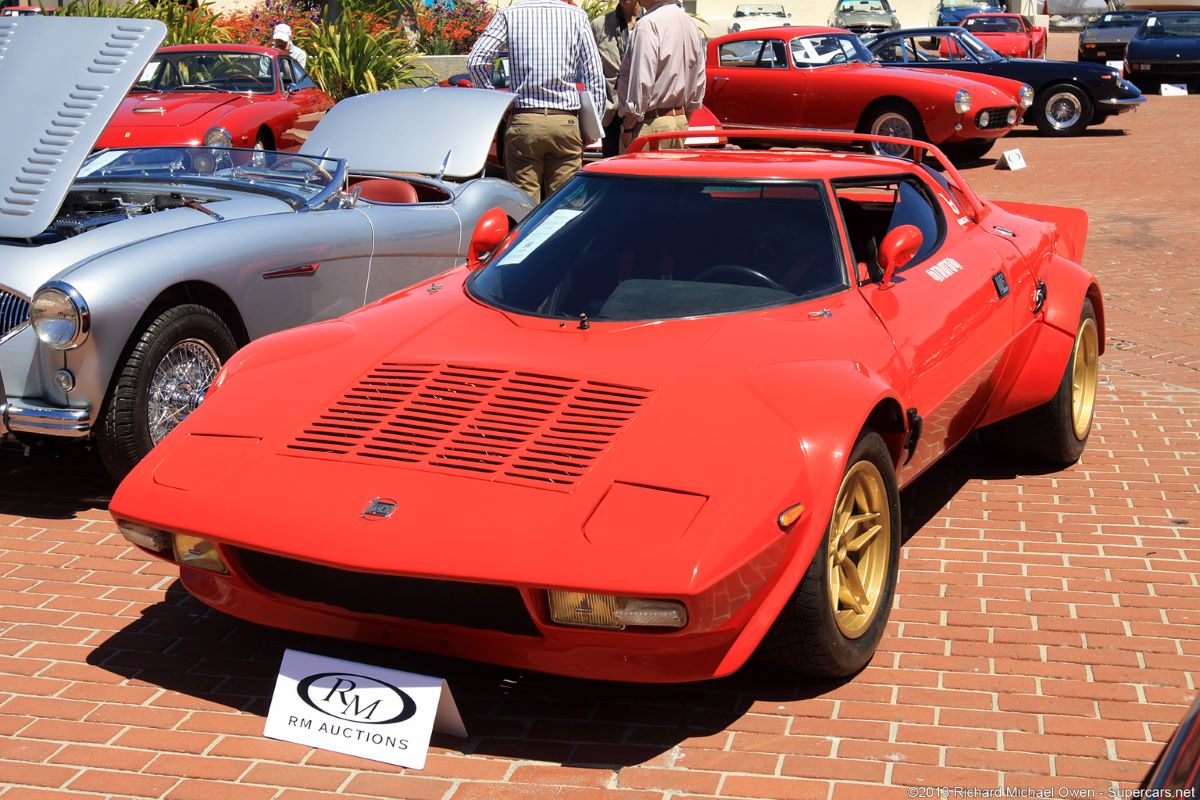
The Lancia Stratos is one of the most iconic rally cars ever built, engineered with a singular focus: to dominate the World Rally Championship.
Produced between 1973 and 1978, the Stratos was revolutionary for its time. It was the first car specifically designed for rally racing, not just a modified version of a street vehicle.
Its aggressive wedge-shaped body, designed by Bertone, made it instantly recognizable and aerodynamically sharp. Under the hood, it packed a 2.4-liter Ferrari Dino V6 engine — a rare collaboration that gave the Stratos its signature sound and power.
Depending on the setup, it produced anywhere from 190 to over 300 horsepower, pushing a car that weighed under a ton. With its short wheelbase, mid-engine layout, and rear-wheel drive, the Stratos was a twitchy, high-strung beast built for performance on tight corners and loose gravel.
The car’s racing pedigree is legendary. It won the World Rally Championship three years in a row — 1974, 1975, and 1976 — and cemented its place in motorsport history.
It didn’t just win; it changed the way rally cars were designed and forced competitors to rethink their strategies. Over the years, the Stratos has become a highly sought-after collector’s item, not just for its performance but for its historical significance.
Decades later, its legacy was honored with the creation of the modern New Stratos, a limited-production homage that kept the spirit of the original alive while updating it with modern tech and materials.
Simply put, the Lancia Stratos wasn’t just a car—it was a game-changer that redefined rallying and proved what’s possible when a car is built with one goal: victory.
Also Read: 12 Best Crossovers Perfect for First-Time Buyers
2. Honda NSX (1990-2005)
Japan’s first true supercar, the Honda NSX, seamlessly blended Ferrari-level performance with Honda’s renowned reliability. Featuring an aluminum monocoque chassis, a groundbreaking first for production cars, it was lighter than Ferrari’s 348.
The manual transmission was so perfectly smooth that shifting felt as effortless as slicing through warm butter. And the pop-up headlights? They were the epitome of ’90s automotive design.
Even after 15 years with minimal updates, the NSX still managed to turn heads, proving that Honda had engineered a car that was simply too well-built. Unfortunately, production ceased in 2005, but the NSX endures as an iconic legend.
The Honda NSX (1990–2005) — also known as the Acura NSX in North America — is one of the most respected Japanese sports cars ever made.
It was Honda’s answer to the likes of Ferrari and Porsche, but with typical Japanese precision, reliability, and innovation. Designed to be a supercar that you could drive daily, the NSX broke conventions in both design and philosophy.
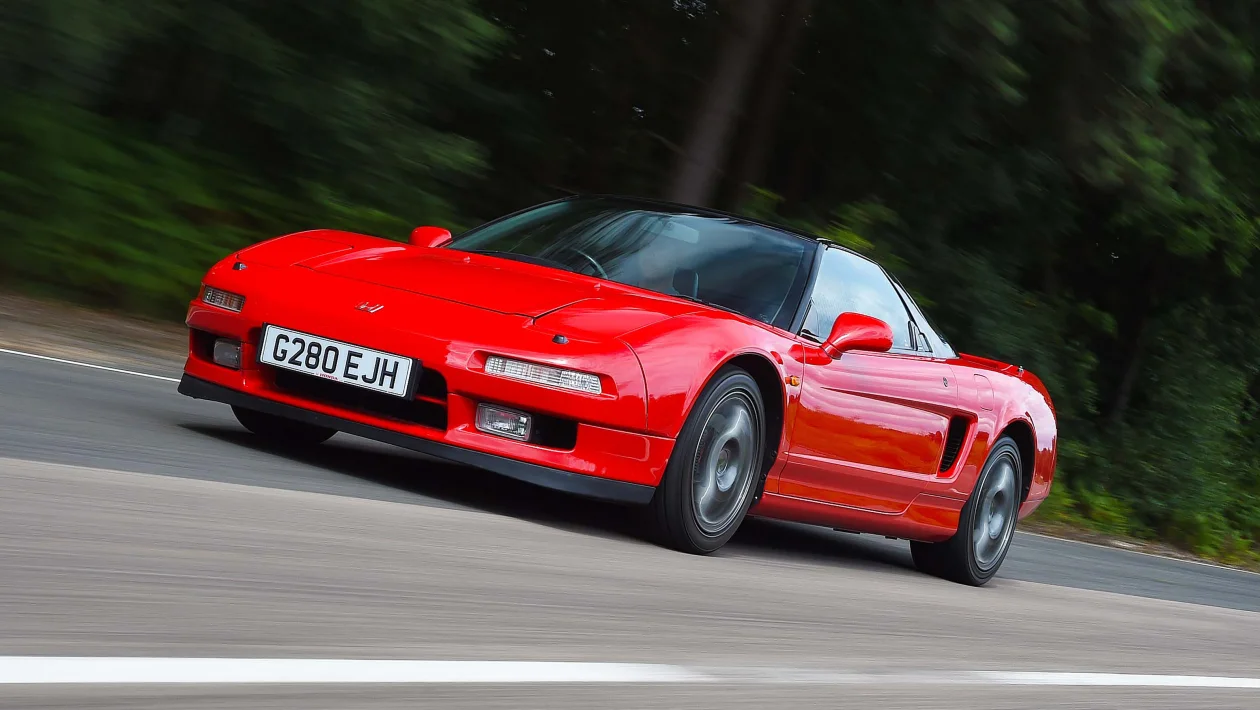
At its core, the original NSX featured a mid-mounted, naturally aspirated 3.0L V6 engine, later upgraded to a 3.2L in 1997. It produced between 270–290 horsepower, depending on the model year and market.
While those numbers may seem modest today, what made the NSX special wasn’t raw power — it was balance, handling, and responsiveness. It was the first production car to use an all-aluminum monocoque body, which made it incredibly light and agile.
Add to that a low center of gravity, finely tuned double-wishbone suspension, and Honda’s legendary reliability, and you had a car that was as thrilling to drive on the track as it was dependable on the street.
The NSX also benefited from input by Ayrton Senna, who helped fine-tune the car’s chassis during development. His feedback pushed Honda to stiffen the suspension and sharpen the car’s performance edge.
The result was a car that delivered an incredibly connected driving experience without the quirks and unreliability often found in European exotics.
Throughout its 15-year run, the NSX remained relatively unchanged — a testament to how far ahead of its time it was when it launched. It was never about brute force. It was about harmony: between power and poise, driver and machine.
Today, the original NSX is a cult classic and a symbol of what happens when engineering takes precedence over marketing hype. It proved that a supercar didn’t have to be temperamental or unlivable — it just had to be brilliant.
3. Mazda RX-7 FD (1992-2002)
The Mazda RX-7 FD (1992-2002) represents Japan’s finest attempt at creating a street-legal spaceship minus the ability to actually fly (unfortunately).
Beneath the hood, or rather deep within its rotary heart, lies the iconic 13B-REW twin-turbocharged 1.3L Wankel engine, capable of revving to impressive heights and generating 276 hp (thanks to Japan’s Gentlemen’s Agreement).
This lightweight coupe, weighing in at under 1,300 kg, features a perfect 50:50 weight distribution, rear-wheel drive, and handling so precise it could slice through sushi.
The Mazda RX-7 FD (1992–2002) is one of the most beloved and legendary Japanese sports cars of all time — a true icon of the JDM scene.
Known for its sleek, curvaceous design and razor-sharp handling, the FD RX-7 stood out not just for how it looked or drove, but for what powered it: the unique and temperamental 13B-REW twin-rotor rotary engine.
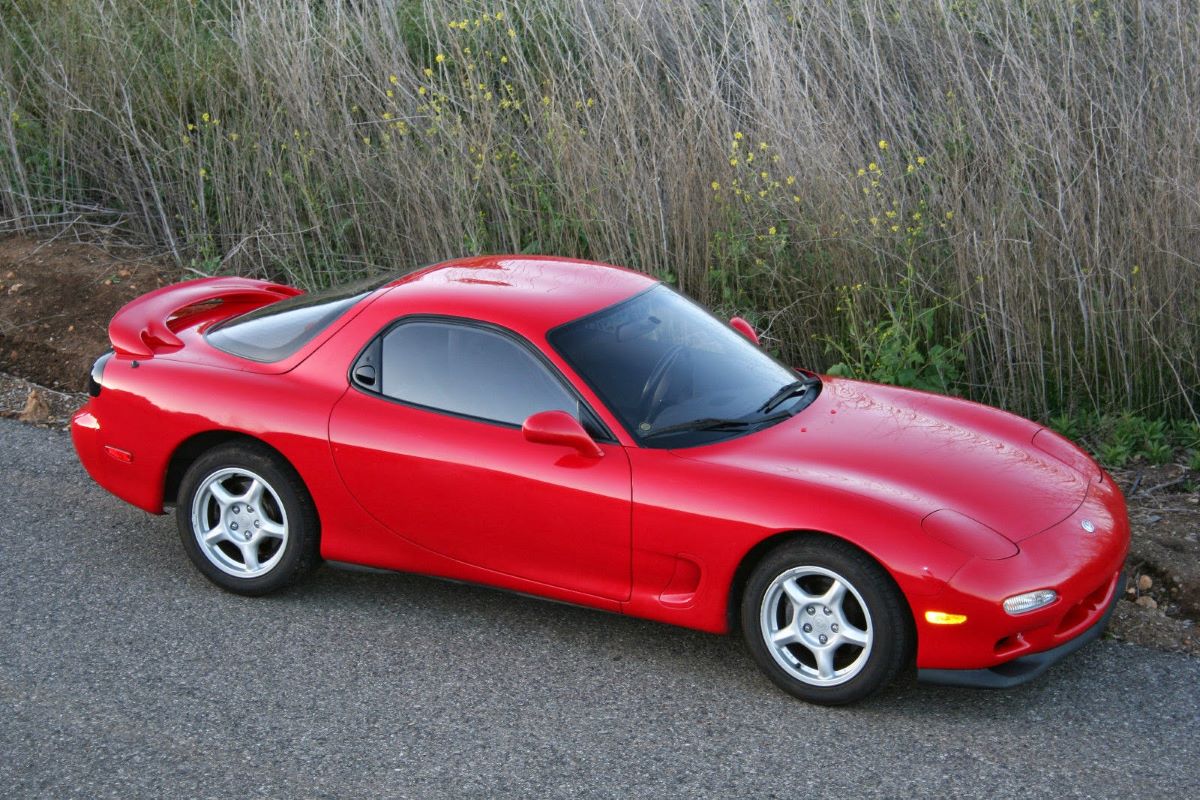
This was the first mass-produced sequential twin-turbocharged rotary engine in the world, pushing out around 252 to 280 horsepower, depending on the market and model year.
Weighing just around 1,250 kg (2,755 lbs), the FD was light, agile, and perfectly balanced, thanks to its front-mid engine layout and near 50:50 weight distribution. It was a driver’s car through and through — nimble, responsive, and raw.
The RX-7 wasn’t about brute strength or comfort; it was about precision, feel, and pushing limits on the road or track. Its styling was equally memorable — low, wide, and smooth, with pop-up headlights that made it an instant classic.
However, the RX-7 FD wasn’t without flaws. The rotary engine, while innovative and rev-happy, demanded obsessive maintenance.
Poor tuning, heat issues, and wear could lead to serious reliability problems if not handled properly — and many owners learned that the hard way. But for enthusiasts willing to respect the quirks, the payoff was immense.
Over the years, the RX-7 FD became a symbol of 90s Japanese performance, elevated further by its role in motorsports and pop culture — most notably in the Fast and Furious franchise and countless video games like Gran Turismo and Need for Speed.
Today, it stands as a cult hero — a car that embodied Mazda’s engineering spirit and dared to be different. The FD RX-7 wasn’t just built to perform — it was built to thrill, and it still does.
4. Volkswagen Beetle (1938-2003)
The Volkswagen Beetle (1938–2003) was the automotive equivalent of a lovable little bug that just refused to go away.
Originally created by Ferdinand Porsche under the direction of a certain mustachioed dictator (yikes), the “people’s car” grew to become a symbol of durability, affordability, and irresistible charm.
Its rear-mounted, air-cooled engine made it as straightforward as a toaster, yet far more enjoyable to drive. The Beetle traveled the globe, earning the title of the best-selling car of its era, with over 21 million units produced.
Production finally came to a close in 2003 in Mexico, marking the end of a significant chapter in automotive history.
The Volkswagen Beetle (1938–2003) is one of the most iconic and recognizable cars in automotive history — a true people’s car that became a global cultural symbol.
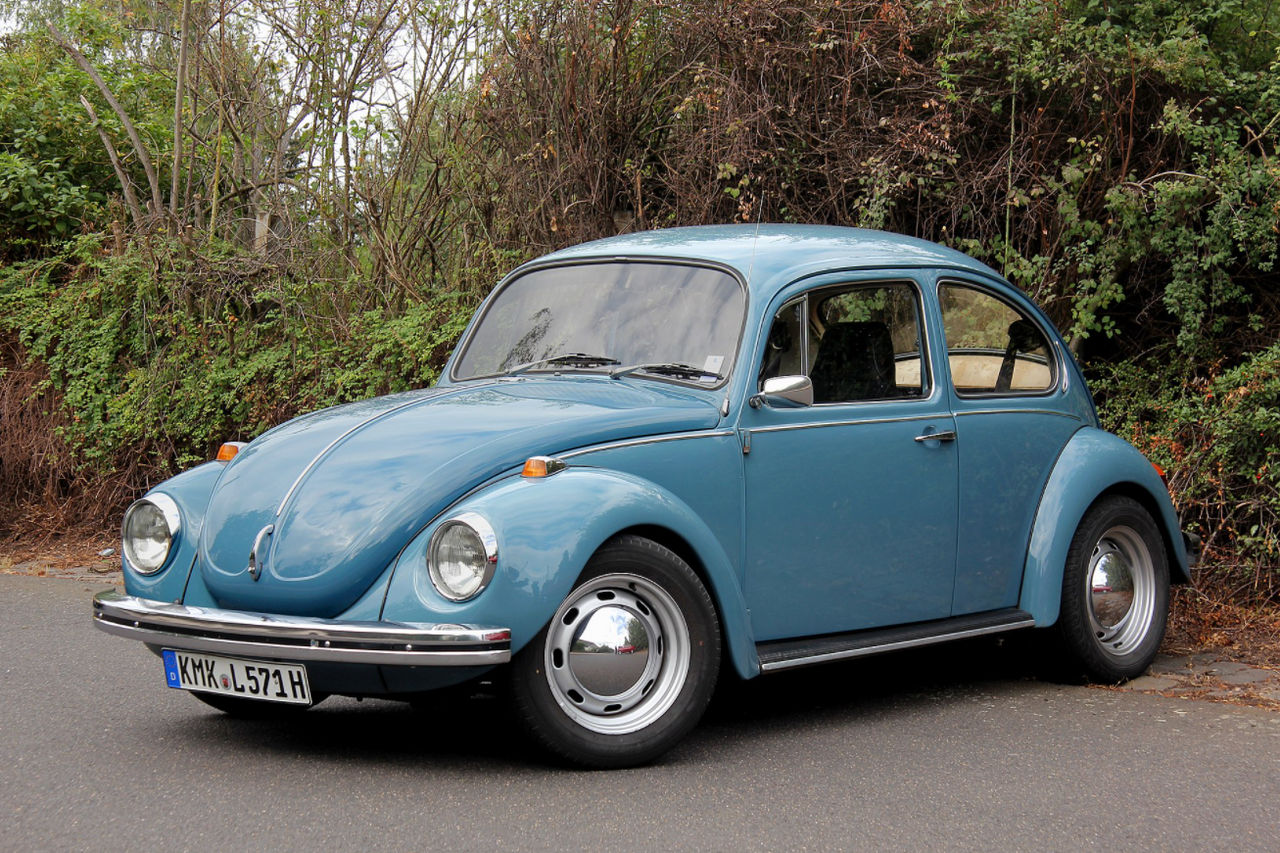
Originally designed in the late 1930s by Ferdinand Porsche under the direction of Adolf Hitler, the Beetle was intended to be an affordable, simple car for German families.
Despite its controversial origins, the car outlived the politics and became something far greater: a symbol of reliability, practicality, and quirky charm.
The classic Beetle featured a rear-mounted, air-cooled flat-four engine, simple suspension, and rugged mechanicals. It wasn’t fast or flashy — early models made as little as 25 horsepower — but it was durable, easy to repair, and cheap to run.
That simplicity is what made it so successful. It handled bad roads, survived rough weather, and lasted forever with basic maintenance. Its unmistakable rounded shape and bug-eyed headlights became instantly recognizable and oddly lovable.
The Beetle gained massive popularity post-WWII, especially in the 1950s and ’60s, with booming sales in the U.S., Europe, and Latin America.
It was marketed as practical and economical, but counterculture movements, especially in the U.S., embraced it as a symbol of anti-establishment and individuality. It became a cultural icon, famously appearing in movies like “Herbie the Love Bug”, and winning hearts around the world.
Over the years, the Beetle received various updates, but it stayed true to its basic design. By the time production of the original model ended in 2003 in Mexico, over 21 million units had been produced — making it one of the best-selling cars of all time on a single platform.
Despite being outdated by modern standards, the Beetle’s legacy is unmatched. It proved that a car doesn’t need high performance or cutting-edge tech to become a legend — just honesty in design, usability, and a whole lot of character.
5. Citroën DS (1955-1975)
The Citroën DS (1955-1975) a car so ahead of its time that even aliens might have taken notes. Unveiled at the 1955 Paris Motor Show, it resembled something straight out of a sci-fi film and sold 12,000 units on its very first day.
The DS (pronounced “Déesse,” meaning “Goddess” in French) was a true engineering masterpiece, featuring hydropneumatic suspension that rendered potholes a non-issue.
It also introduced power steering, disc brakes, and a semi-automatic gearbox innovations that were groundbreaking for its era.
The Citroën DS (1955–1975) wasn’t just ahead of its time — it looked and drove like it came from the future. When it debuted at the 1955 Paris Motor Show, it shocked the world.
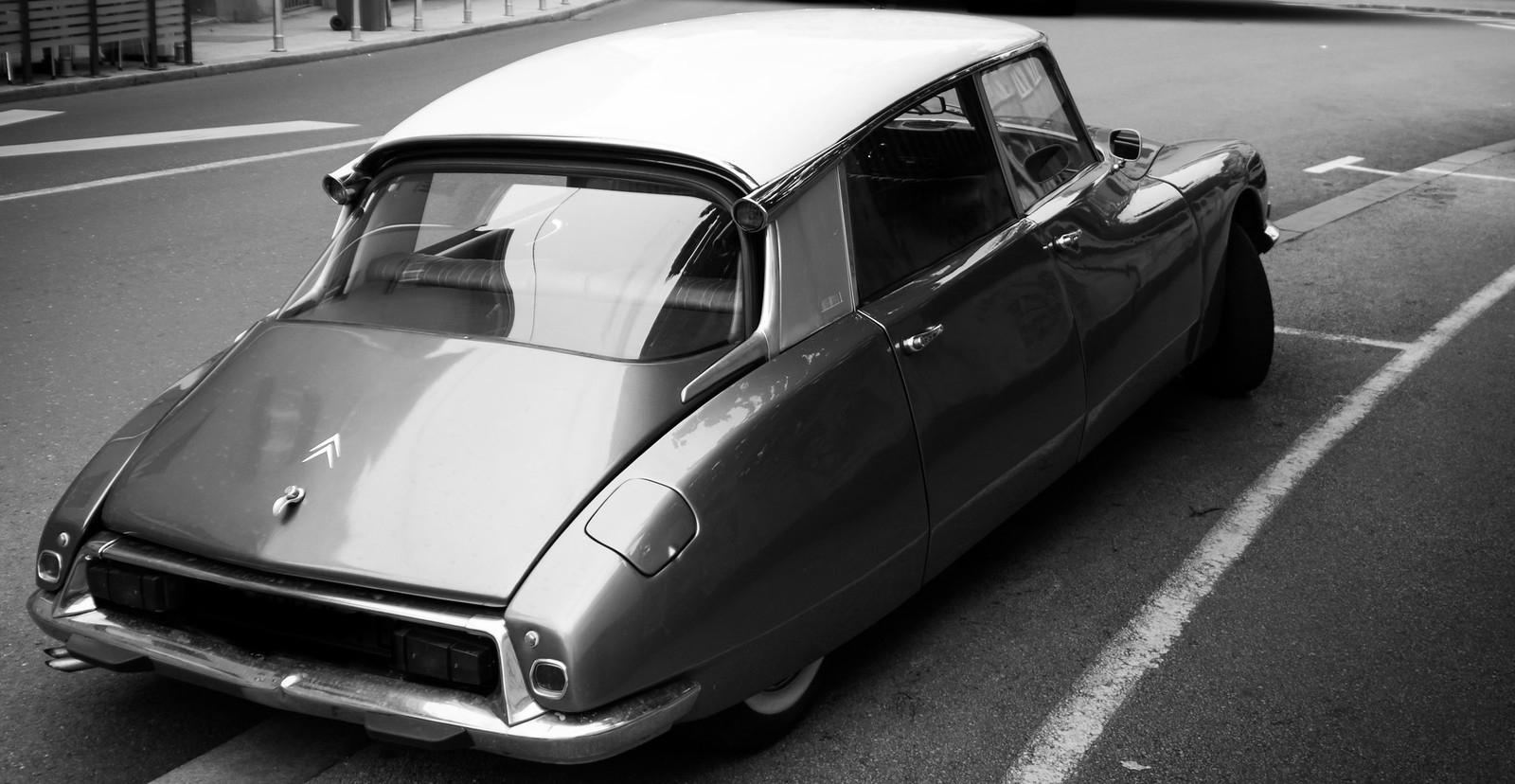
Within 15 minutes, Citroën took over 700 orders, and by the end of the day, that number ballooned to nearly 12,000. Why? Because no one had ever seen a car like this before.
The DS (pronounced “Déesse,” the French word for “goddess”) combined revolutionary design with cutting-edge technology. Styled by Flaminio Bertoni, it had a sleek, aerodynamic body that looked like nothing else on the road — especially in the ’50s, when most cars were still boxy and conservative.
Underneath that sci-fi skin was its biggest game-changer: hydropneumatic suspension. This self-leveling, height-adjustable suspension system gave the DS an eerily smooth ride, making bumps and potholes almost disappear.
It could raise and lower itself, lean into turns, and maintain balance even on three wheels — and yes, you could literally drive it with a flat tire.
The DS also featured innovations like power-assisted steering, disc brakes (a first for a production car), and later, directional headlights that turned with the steering wheel. This car redefined what comfort and control could mean in a luxury sedan.
It wasn’t a performance monster, but it didn’t need to be — it was elegant, intelligent, and miles ahead of the competition in terms of refinement and engineering.
Beyond its tech, the DS became a cultural icon in France and around the world. It was the car of choice for intellectuals, artists, and even French President Charles de Gaulle, who credited its advanced suspension for saving his life during an assassination attempt.
By the time production ended in 1975, nearly 1.5 million units had been sold. But the Citroën DS wasn’t just a car — it was a rolling piece of art and a symbol of how bold design and innovation could redefine the entire industry.
To this day, it’s remembered not just as one of the greatest Citroëns ever made, but one of the most important cars in automotive history.
Also Read: Top 10 Classic Pontiacs That Can Still Run Today
Cars That Fall Apart Fast
When buying a car, we tend to focus on factors such as price, design, or fuel efficiency. However, longevity is an essential consideration that can have a major effect on your finances and peace of mind over time.
Not all vehicles are designed for long-term durability, and some may only last half as long as the average car. Based on a variety of reports and consumer feedback, here are five cars that may not have the same lifespan as others.
1. Chevrolet Sonic
The Chevrolet Sonic carries a mixed track record regarding long-term durability. While this subcompact car delivers a smooth ride and intuitive tech features, it has come under scrutiny for its reliability over time.
Many owners have noted problems with the engine and transmission repairs that can be expensive and may shorten the vehicle’s overall lifespan more than anticipated.
The Chevrolet Sonic, also known in some markets as the Chevy Aveo, was Chevy’s answer to the compact car segment — a practical, affordable, and efficient small car aimed at younger buyers and urban commuters.
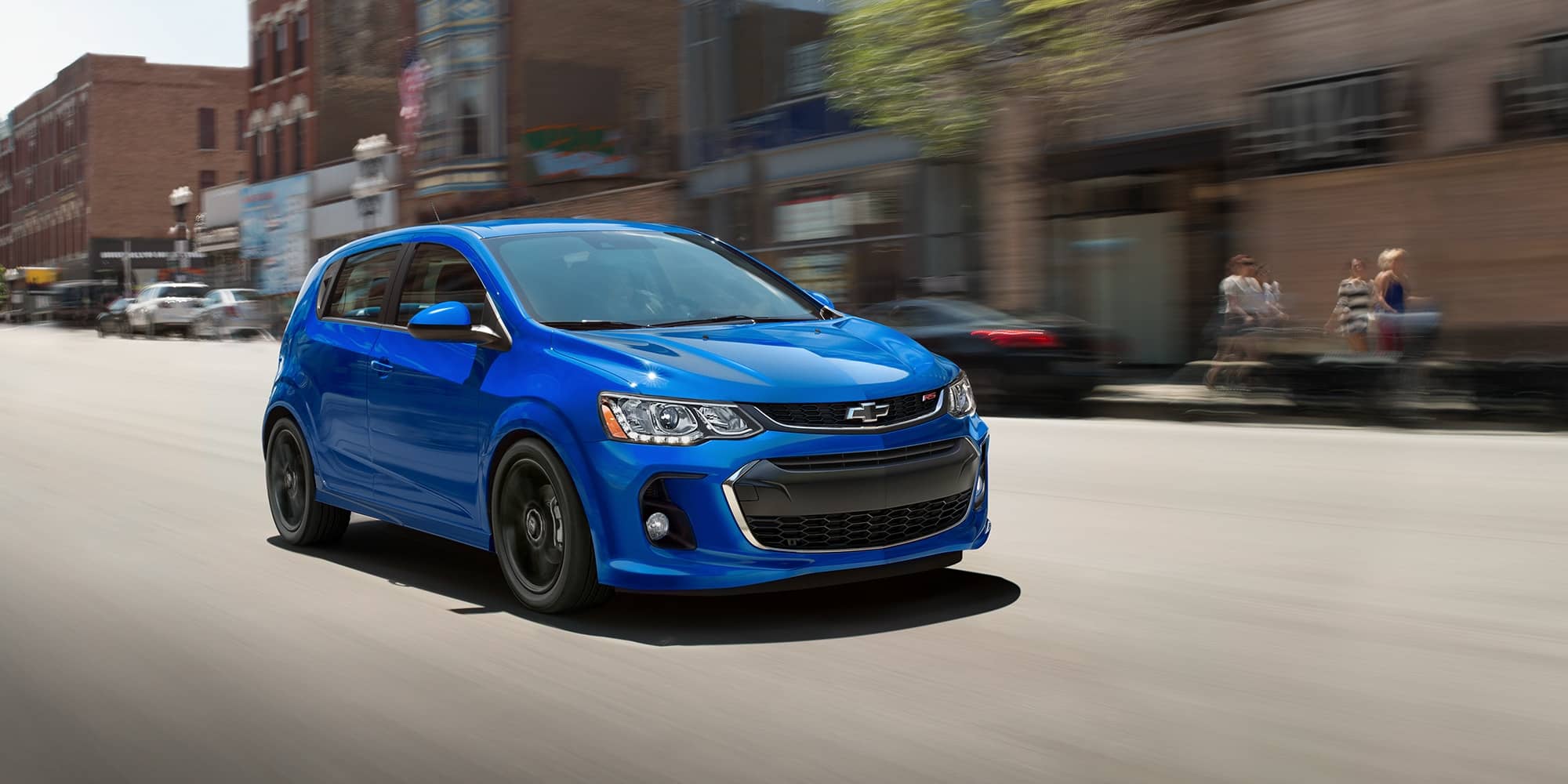
It was first introduced in 2011 as a replacement for the Aveo in North America and was produced until 2020. Available as both a sedan and a hatchback, the Sonic was built to be a little more fun and sporty than your average economy car.
Under the hood, the Sonic offered a few engine options over its run, but the most notable was the 1.4L turbocharged inline-4, which delivered a decent blend of performance and fuel economy.
Paired with either a 6-speed manual or automatic transmission, the Sonic wasn’t fast, but it had enough punch to make city driving enjoyable. It also stood out from competitors by offering a surprisingly composed ride and nimble handling for its class.
Inside, the Sonic had a youthful, motorcycle-inspired gauge cluster and a relatively simple but functional interior.
Higher trims came with features like a touchscreen infotainment system, Apple CarPlay/Android Auto, and even heated seats. Safety tech also improved over time, with options like forward collision warning and lane departure warning becoming available.
Despite its practical nature and decent reviews, the Sonic never really lit up the sales charts. As buyer preferences shifted toward crossovers and SUVs, compact sedans and hatchbacks like the Sonic saw their popularity dwindle. Chevrolet officially discontinued the model in 2020.
In short, the Chevrolet Sonic was a solid, no-nonsense compact car with just enough flair to keep things interesting. It wasn’t flashy or fast, but it did its job well — offering reliable transportation with a little attitude and some unexpected features for the price.
2. Fiat 500
The Fiat 500 stands out for its stylish design and compact size, making it ideal for urban driving. However, it lacks strength when it comes to long-term durability.
Many owners have reported recurring mechanical issues, particularly with the electrical systems and transmission.
These problems can lead to mounting repair bills, which may make the Fiat 500 a less practical choice for buyers looking for a dependable, long-lasting vehicle.
The Fiat 500 is one of the most iconic small cars ever made, embodying Italy’s flair for compact, stylish design and practical urban mobility. The original Fiat 500, or “Cinquecento,” launched in 1957 and ran until 1975.
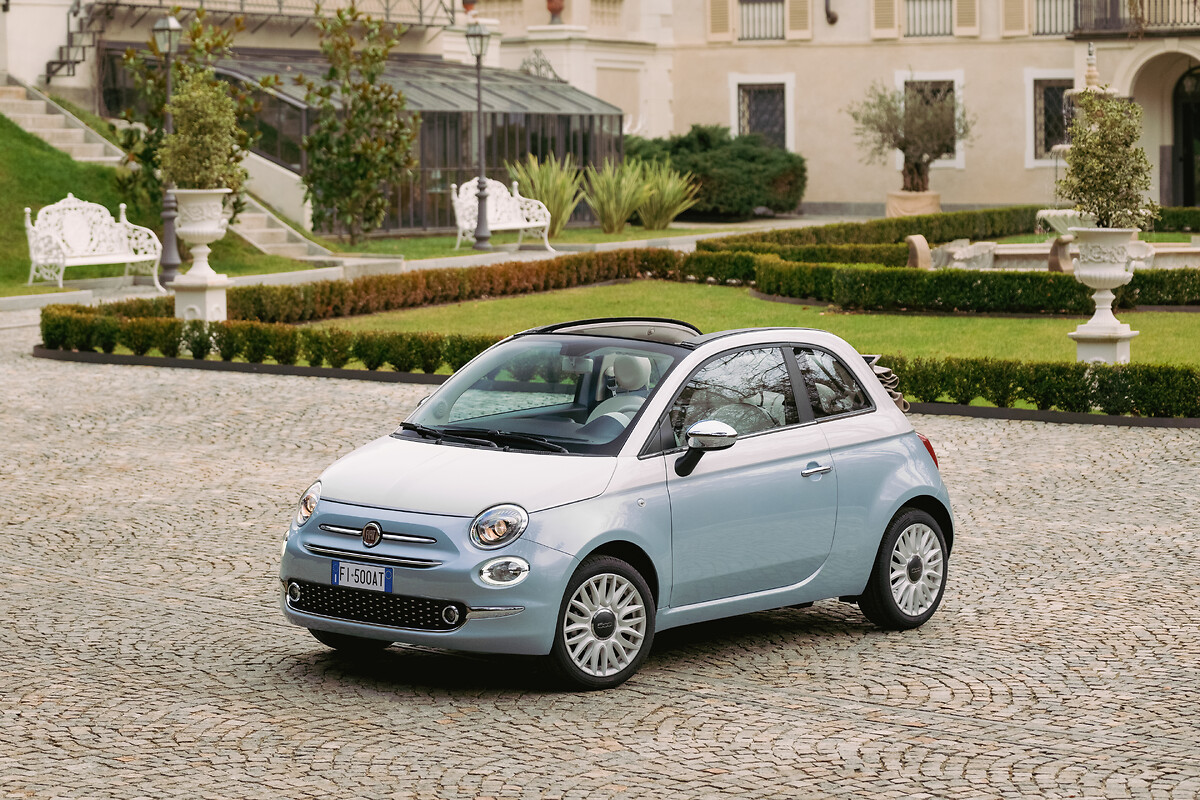
It was Italy’s answer to the post-war need for cheap, reliable transportation — and it nailed it. Tiny, charming, and incredibly efficient, the first-gen 500 became a symbol of freedom for the working class and a staple of Italian city life.
The original model was powered by a small rear-mounted, air-cooled two-cylinder engine, starting with just 13 horsepower. But with a curb weight under 500 kg (about 1,100 lbs), it didn’t need much to get moving.
It was incredibly fuel-efficient and easy to park in the tight streets of Rome or Milan. Despite its modest performance, it was full of character, and its minimalist charm earned it a place in car culture far beyond Italy.
Fast forward to 2007, and Fiat brought the 500 back — this time as a retro-inspired city car for the modern age. It kept the adorable styling cues of the original but updated everything else: front-engine, front-wheel drive layout, modern safety features, digital infotainment, and more refined interiors.
The reborn 500 became a global hit, especially in Europe, and even made its way to the U.S. market in 2011 under the Fiat-Chrysler umbrella. It was available in various versions, including the sportier Abarth, which delivered turbocharged performance in a small, aggressive package.
Over the years, the modern 500 evolved with electric variants like the 500e, especially as Europe began pushing toward zero-emission city cars. In 2020, Fiat launched a fully redesigned electric-only version of the 500, available in some markets, positioning it as a premium urban EV.
Bottom line: the Fiat 500 has always been about style, simplicity, and city-friendly practicality. Whether it’s the classic 1957 model or the modern EV, the 500 proves that small doesn’t have to mean boring — it can be iconic.
3. Dodge Journey
The Dodge Journey, a midsize crossover SUV, has encountered several reliability concerns over the years.
Although it provides generous interior space and a smooth driving experience, its long-term durability raises some doubts.
Reports have highlighted recurring problems with the engine and transmission two vital components that play a key role in determining a vehicle’s lifespan.
The Dodge Journey is a mid-size crossover SUV that was produced from 2009 to 2020, and while it never set the segment on fire, it carved out a space for itself as a budget-friendly, family-oriented vehicle.
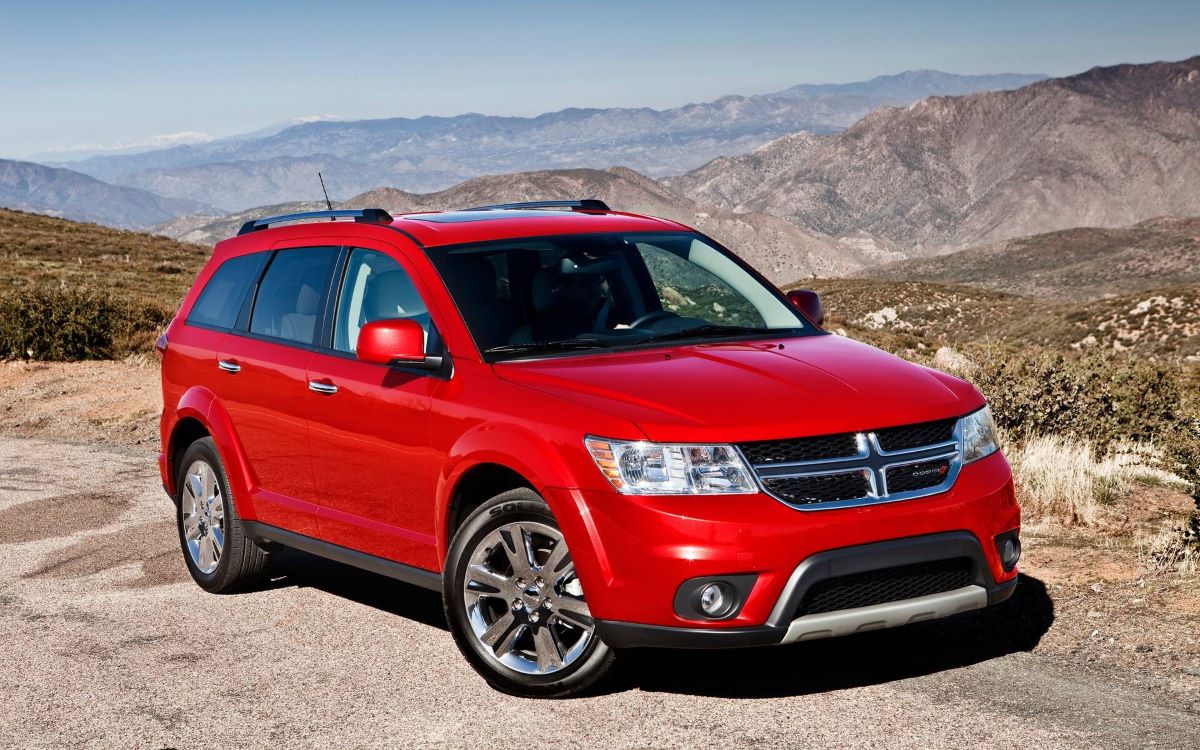
Designed to slot between compact and full-size SUVs, the Journey was Dodge’s attempt to offer a versatile people-mover with three-row seating, decent cargo space, and a low price point.
Mechanically, it offered a range of engines over the years — from a basic 2.4L inline-4 to a more capable 3.6L Pentastar V6, the latter of which gave it better power and towing ability.
Front-wheel drive came standard, with all-wheel drive available on V6 models. While not particularly fast or sporty, the V6 versions had enough muscle for daily driving and light hauling.
Inside, the Journey was functional. It could seat up to seven passengers, which was a rare feature at its price point. The interior quality was average — not luxurious, but not stripped-down either, especially in higher trims like the Crossroad or GT.
Dodge tried to add value by offering features like touchscreen infotainment, rear-seat entertainment systems, and hidden storage compartments under the floor.
However, the Journey was often criticized for being dated — both in terms of design and tech. It went over a decade without a full redesign, which made it feel behind the curve compared to rivals like the Honda CR-V, Toyota RAV4, or Ford Edge. Its safety ratings were also middling, and its driving dynamics were more minivan than SUV.
Despite this, the Journey sold fairly well — mainly because of its low cost and generous discounts. For families on a budget, it was one of the most affordable ways to get into a three-row vehicle.
In 2020, Dodge finally discontinued the Journey, quietly phasing it out with minimal updates in its last few years.
In the end, the Dodge Journey wasn’t a standout performer, but it did what it was supposed to: deliver space and utility at a price that undercut most competitors. It was the definition of “gets the job done” — no frills, no flash, just function.
4. Ford Fiesta
The Ford Fiesta is a well-liked compact car, praised for its nimble handling and impressive fuel economy. However, its track record for long-term reliability is less than stellar.
Many owners have experienced transmission troubles, especially in models equipped with the automatic gearbox. These issues often result in expensive repairs and can significantly shorten the vehicle’s overall lifespan.
The Ford Fiesta is a long-running subcompact car that became one of Ford’s most successful and recognizable global models. First introduced in 1976, the Fiesta was designed to be small, affordable, and fuel-efficient — and it delivered on all fronts.
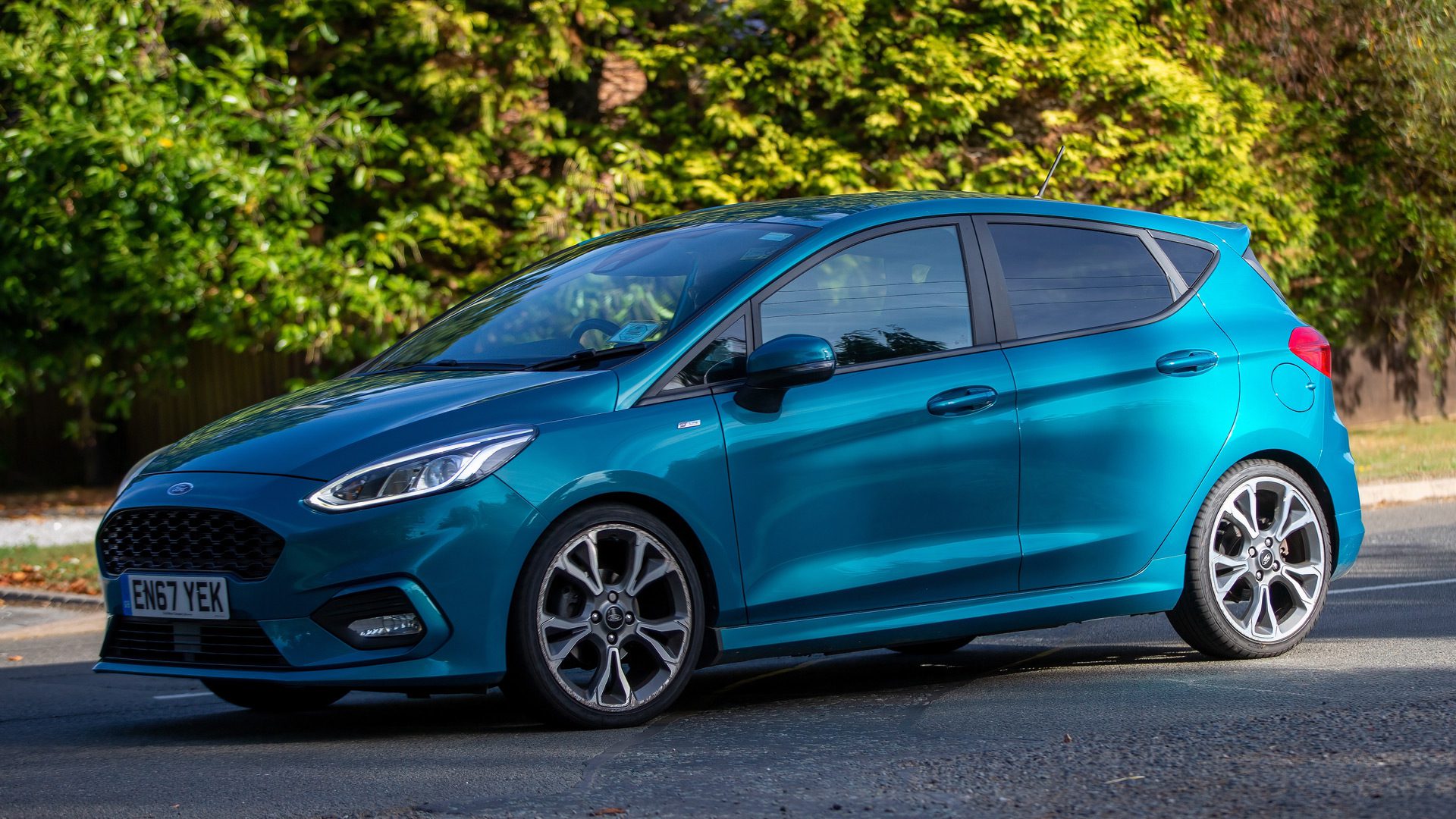
Over seven generations, it evolved from a no-frills economy box into a stylish, tech-savvy, and even performance-oriented car, especially in its later years.
For most of its life, the Fiesta was a go-to option for budget-conscious drivers who still wanted a car that was fun to drive. It offered sharp handling, peppy engines, and a surprisingly refined ride for its size.
The car was especially popular in Europe, where tight city streets and high fuel prices made compact hatchbacks the norm. In the U.S., it had a couple of runs — first briefly in the late ‘70s and early ‘80s, then more successfully between 2010 and 2019, when Ford reintroduced it to the North American market.
One of the standout models was the Fiesta ST, a hot hatch that became a fan favorite. With a turbocharged 1.6L engine, tight suspension, and a slick manual transmission, the ST was a blast to drive and widely praised as one of the best performance bargains of the 2010s. It delivered big thrills in a tiny, affordable package.
Throughout its run, the Fiesta came in both hatchback and sedan versions (though the sedan was mainly for markets like the U.S.).
Inside, it offered modern features like Ford’s SYNC infotainment system, Bluetooth, and later on, Apple CarPlay and Android Auto. But its true strength was always its agility, efficiency, and accessible price.
Unfortunately, as consumer tastes shifted toward crossovers and SUVs, demand for small cars like the Fiesta dropped hard. Ford discontinued the Fiesta in the U.S. after the 2019 model year and officially ended European production in 2023, marking the end of an era.
Bottom line: the Ford Fiesta was proof that small cars didn’t have to be boring. It was cheap, cheerful, and — especially in ST form — capable of delivering serious driving fun without draining your wallet.
5. Mitsubishi Mirage
The Mitsubishi Mirage ranks among the most budget-friendly cars available, but its affordability may come at the expense of long-term durability.
Numerous owners have reported a range of issues, including engine troubles and questions surrounding overall build quality. These concerns can lead to a shorter-than-expected lifespan for a vehicle that’s fresh off the lot.
The Mitsubishi Mirage is a subcompact car that has become known for its affordable pricing and impressive fuel efficiency. First introduced in 1978, it went through several generations and has been sold in various markets under different names.
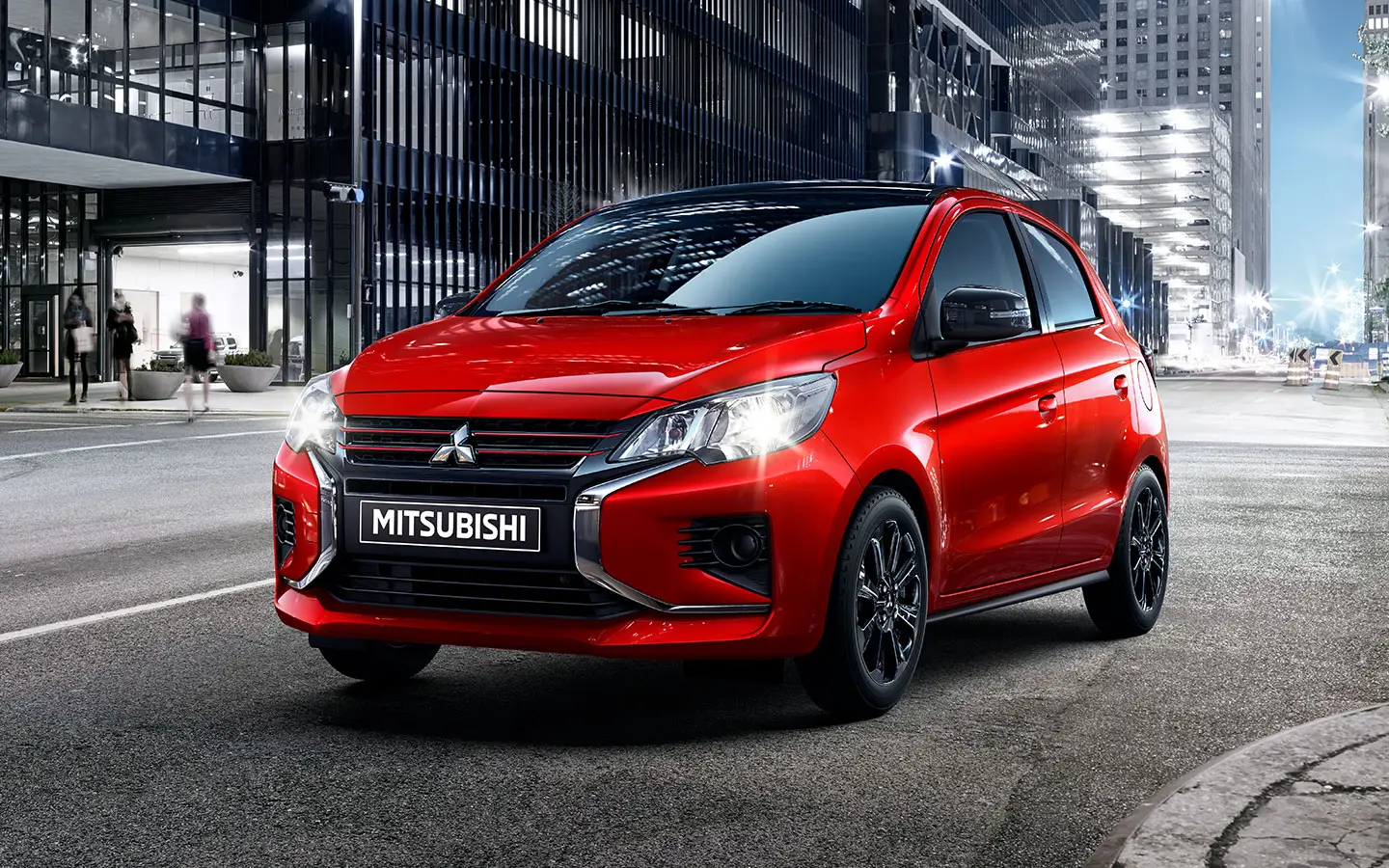
However, the Mirage that most people are familiar with today began its second run in 2014, when Mitsubishi reintroduced it to North America as an entry-level hatchback with a focus on economy.
The Mirage is primarily designed to be practical, offering a low cost of ownership, excellent gas mileage, and compact dimensions ideal for city driving. It features a 1.2L 3-cylinder engine, producing modest power — usually around 78 horsepower — but that’s enough for a car this light and small.
Despite its small engine, the Mirage was one of the most fuel-efficient cars in its class, often returning over 40 mpg on the highway, making it a popular choice for those prioritizing savings at the pump.
Inside, the Mirage kept things basic. The cabin was simple, with minimal frills, but it offered essential features like a touchscreen infotainment system, Bluetooth connectivity, and a relatively spacious interior considering its size.
While the quality of materials wasn’t particularly high-end, it served its purpose of providing no-nonsense transportation at a low price.
In terms of performance, the Mirage wasn’t known for being particularly exciting. The ride was comfortable enough, but handling and acceleration were fairly underwhelming compared to competitors. It was never meant to be a performance car; it was meant to be cheap, efficient, and easy to drive.
While the Mirage wasn’t a standout in terms of styling or performance, it found its niche in the market as an economy car.
It catered to people looking for a basic vehicle with a low upfront cost, minimal maintenance, and exceptional fuel economy. It also served as a more affordable alternative to compact and subcompact cars from other manufacturers.
The Mirage’s simplicity and value proposition allowed it to endure for several years, but with sales declining in markets like the U.S., Mitsubishi eventually pulled the model from the North American market after the 2020 model year.
In some regions, however, it continued to serve as an affordable option for those who just needed a no-frills car to get from point A to point B.
In summary, the Mitsubishi Mirage was never about excitement or luxury; it was all about providing affordable, efficient transportation, and it did that job well, especially for those on a budget. It’s the kind of car that prioritized practicality over performance, and for many buyers, that was exactly what they needed.

